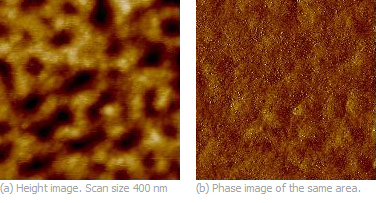A copolymer is a polymer derived from two or more monomeric species, as opposed to a homopolymer where only one monomer is used.
A special kind of copolymer is called a "block copolymer". Block copolymers are made up of blocks of different polymerized monomers. For example, PS-b-PMMA is short for polystyrene-b-poly(methyl methacrylate) and is made by first polymerizing styrene, and then subsequently polymerizing MMA from the reactive end of the polystyrene chains.
The nanoscale structures created from block copolymers could potentially be used for creating devices for use in computer memory, nanoscale-templating and nanoscale separations.
Block copolymers are interesting because they can "microphase separate" to form periodic nanostructures. Because the blocks are covalently bonded to each other, they cannot demix macroscopically. Depending on the relative lengths of each block, several morphologies can be obtained. Sufficiently different block lengths lead to nanometer-sized spheres of one block in a matrix of the second (for example PMMA in polystyrene as shown in Fig. 1.
| Fig. 1.Height and phase images of block copolymer (polystyrene-block-polymethylmethacrylate) film obtained in tapping Mode. Images courtesy of S. Magonov. |
 |
